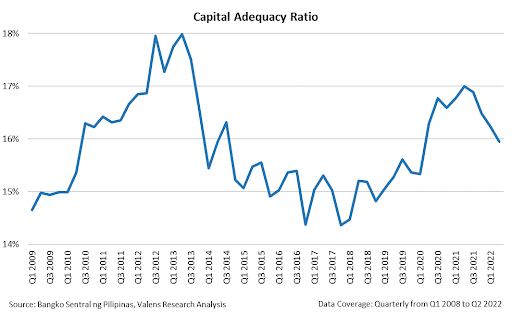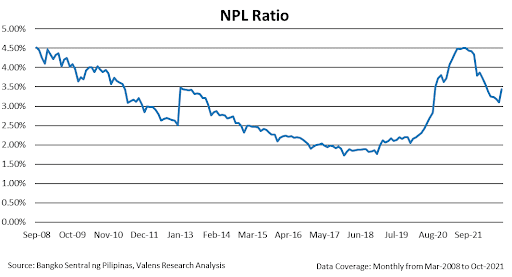PH Monday Macro: Slow and steady wins the race, especially for investors who monitor this economic indicator

Many investors continue to be worried about the state of the Philippine economy and its overall direction heading into the new year. With how the local stock market has behaved recently, and the likelihood of window dressing in the last month of the calendar year, many are concerned the economic recovery might not have a leg to stand on.
While the short-term volatility of the markets has investors spooked, it’s unlikely we’ll be seeing another recession as long as the current credit indicators continue to show positive signals.
Philippine Markets Newsletter:
The Monday Macro Report
Powered by Valens Research
In 2013, the Bangko Sentral ng Pilipinas (BSP) issued guidelines on implementing the minimum capital requirements in accordance with the Basel III standards. All banks operating in the Philippines had to comply by January 1, 2014.
The reason why these standards exist in the first place was to prevent another financial crisis like the 2008/2009 Great Recession from happening again. Banks had to keep a certain level of capital available, enough to service withdrawals and still grow through investments. In other words, banks had to have a comfortable level of liquidity and they had to be more careful about investment risks.
The Philippines’ central bank has been fairly conservative in the past decade or so, which has helped keep credit risk low for the country’s banks.
For example, Basel III requires banks to maintain an 8% capital adequacy ratio (CAR), while the BSP requires a higher CAR of 10%. CAR measures a bank’s capital relative to its risk-weighted assets and current liabilities. This means a higher ratio is usually preferred as that implies the bank has enough capital to cover its obligations.
As of March 2022, Philippine CAR was at 16.8%, up from the sub-16% levels of the first year of the pandemic, though slightly lower compared with 2021 data.
This relatively comfortable level of capital available shows banks are at little risk of running out of capital. However, there’s another side to the coin we need to look at—non-performing loans (NPLs). Even if banks were compliant with Basel III standards, being unable to collect what is due to them will put a strain on the availability of capital in the near future.
NPLs (or bad loans) are principal amounts or interest that have been unpaid for ninety (90) days from the date of the contract. In addition, loans will also be considered as such when existing accounting standards classify them as impaired.
An increasing NPL ratio indicates that the quality of loans is worsening and implies a greater risk of loss for banks. During economic recessions, especially—like the most recent one caused by the pandemic—NPLs tend to increase as tight economic conditions make it more difficult for people and businesses to pay their loans on time.
What we’re seeing now is continued improvement in the NPL ratio. As of September 2022, the ratio is at 3.4%, the same level it was when the recession started in August/September 2020. However, the BSP is expecting a slowdown in the rate of decline as interest rates rise.
As long as these two credit indicators continue to point in the same direction, there is little reason to worry about the Philippines going through another recession in the near future.
About the Philippine Markets Newsletter
“The Monday Macro Report”
When just about anyone can post just about anything online, it gets increasingly difficult for an individual investor to sift through the plethora of information available.
Investors need a tool that will help them cut through any biased or misleading information and dive straight into reliable and useful data.
Every Monday, we publish an interesting chart on the Philippine economy and stock market. We highlight data that investors would normally look at, but through the lens of Uniform Accounting, a powerful tool that gets investors closer to understanding the economic reality of firms.
Understanding what kind of market we are in, what leading indicators we should be looking at, and what market expectations are, will make investing a less monumental task than finding a needle in a haystack.
Hope you’ve found this week’s macro chart interesting and insightful.
Stay tuned for next week’s Monday Macro report!
Regards,
Angelica Lim
Research Director
Philippine Markets Newsletter
Powered by Valens Research
www.valens-research.com






